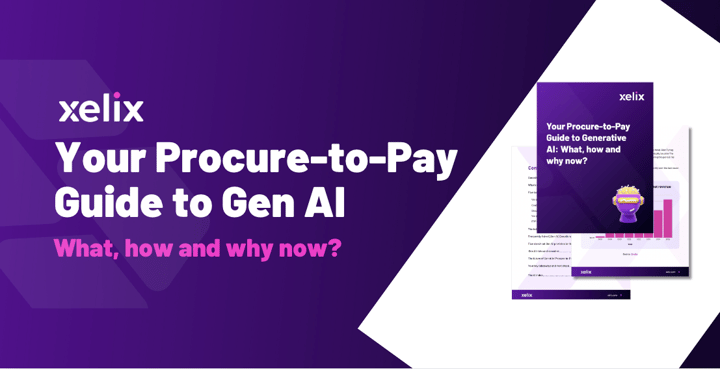.png?length=720&name=Using%20AI%20to%20build%20world-leading%20duplicate%20invoice%20prevention%20software%20(1).png)
At Xelix, we are committed to developing AI systems that are not only effective but also responsible in their design, implementation, and deployment. This paper outlines our approach to responsible AI, organised around the key principles that guide our work: reliability and accuracy, bias and ...
Read more - Responsible AI at Xelix
.png?length=720&name=Blog%20feature%20images%20-%20720x369%20(2).png)
AI is popping up in countless business functions across every industry. But what does AI actually mean? And more importantly, how does it ...
Read more - Your ultimate AI glossary: behind the buzzword

Your Procure-to-Pay Guide to Generative AI: What, how and why now? Artificial Intelligence is here to stay. It’s popping up in every ...
Read more - Your Procure-to-Pay Guide to Generative AI: What, how and why now?

Gen AI adoption isn’t a question of if but when for P2P teams. Business is transforming and Procure-to-Pay teams need to keep up. With its ...
Read more - Top 5 Gen AI use cases for P2P teams
.png?length=720&name=How%20to%20prepare%20for%20your%20year-end%20Accounts%20Payable%20audit%20%20(8).png)
The Accounts Payable climate is evolving. More and more AP teams are recognising the value of technology and AI as a catalyst for ...
Read more - 9 ways an AP helpdesk is going to make your life easier
.png?length=720&name=Using%20AI%20to%20build%20world-leading%20duplicate%20invoice%20prevention%20software%20(1).png)
Under the hood of Xelix's Accounts Payable Control Centre By combining rule-based algorithms and machine learning models, Xelix has become ...
Read more - How AI and Data Science are driving finance transformation

You spoke and we listened. We asked Xelix customers what would be truly transformative for their overstretched Accounts Payable teams. And ...
Read more - The age of AI: Automated statement reconciliation

We spend a lot of time thinking about ‘Invoice Intelligence’. It’s a term we’ve thought up to describe the technology that sits right at ...
Read more - What is Invoice Intelligence?

Despite the marketing headlines, most – if not all – players in the duplicate invoice prevention market use rules-based tools to detect ...
Read more - Using AI to build world-leading duplicate invoice prevention software